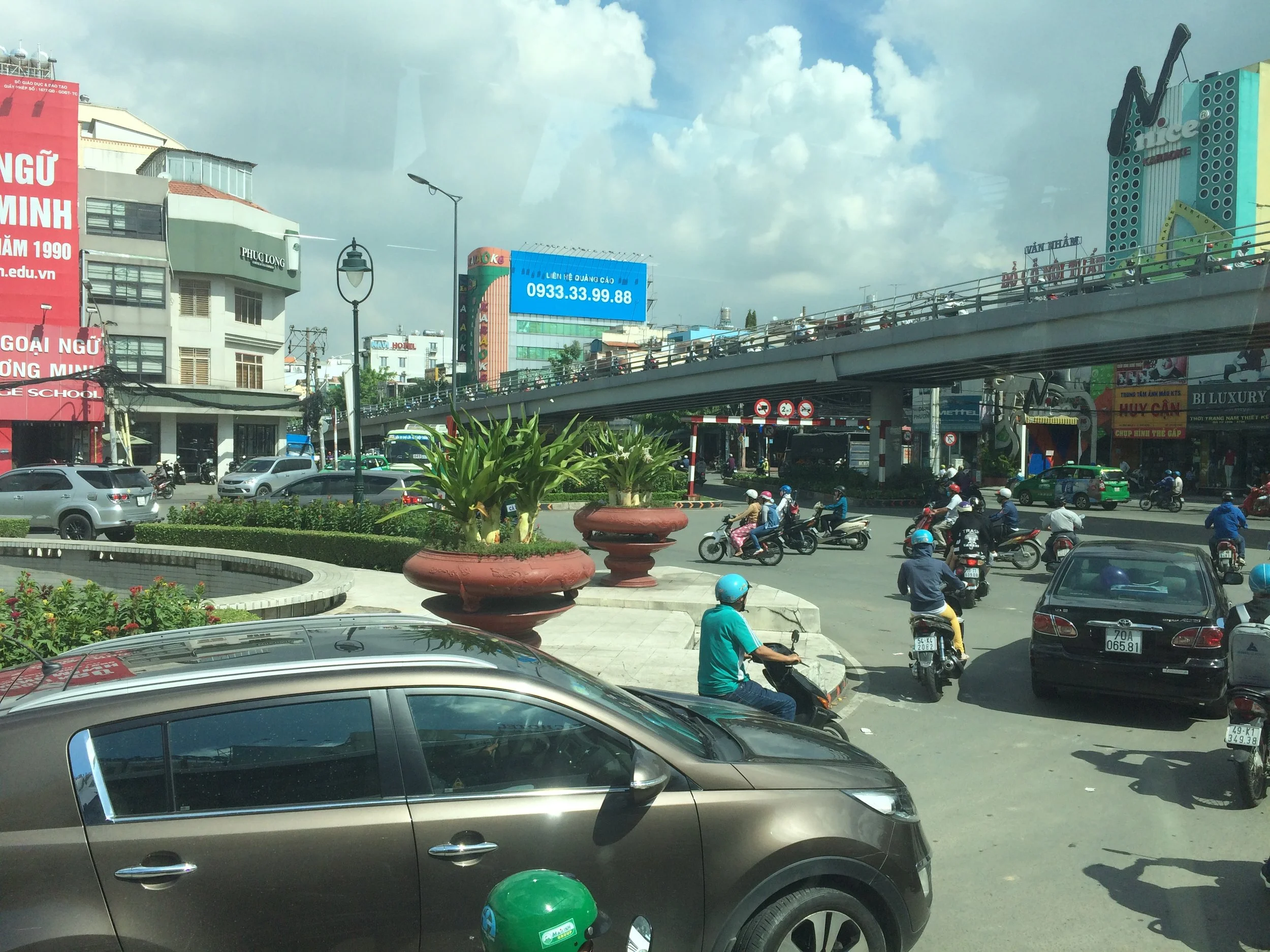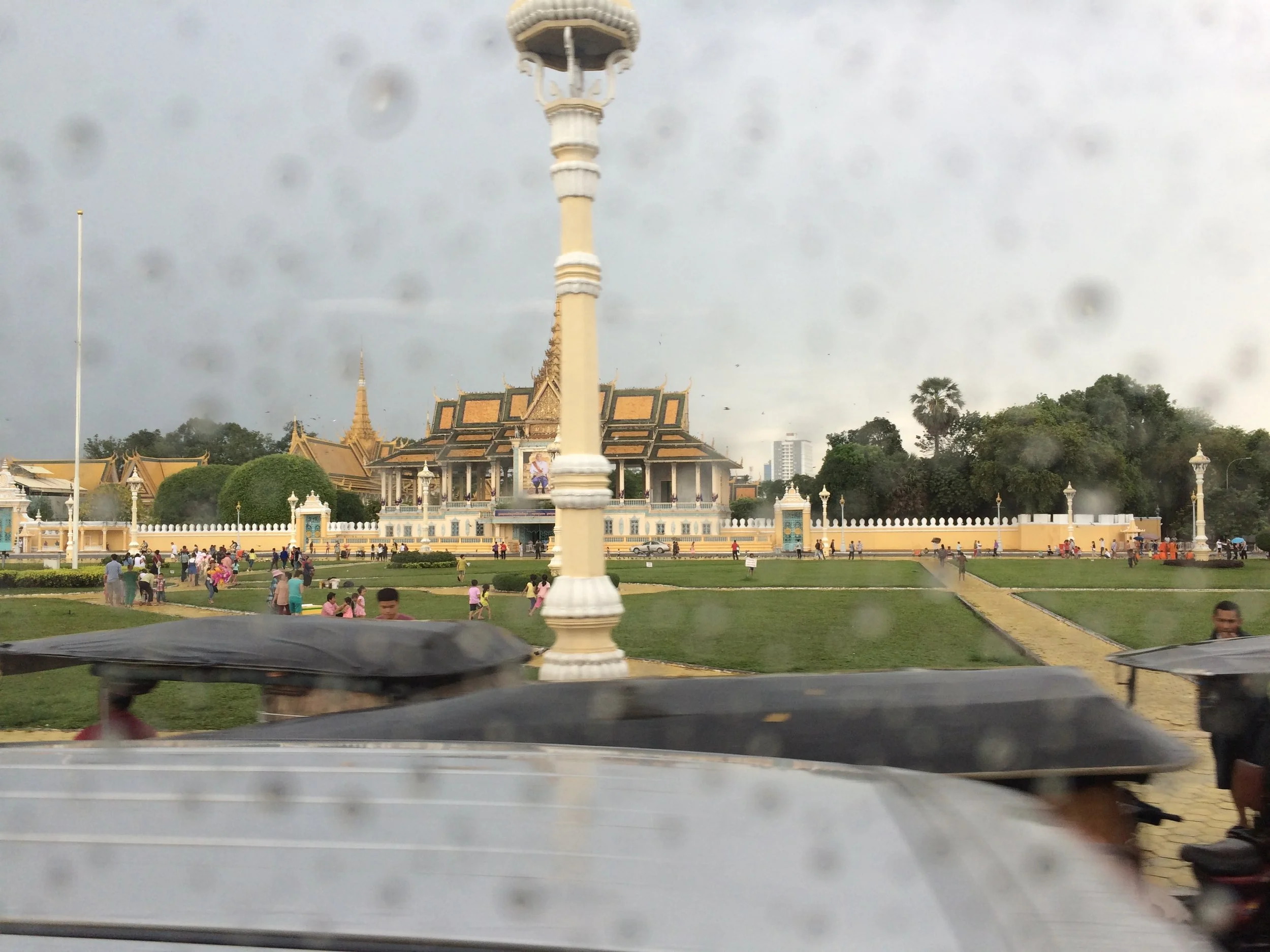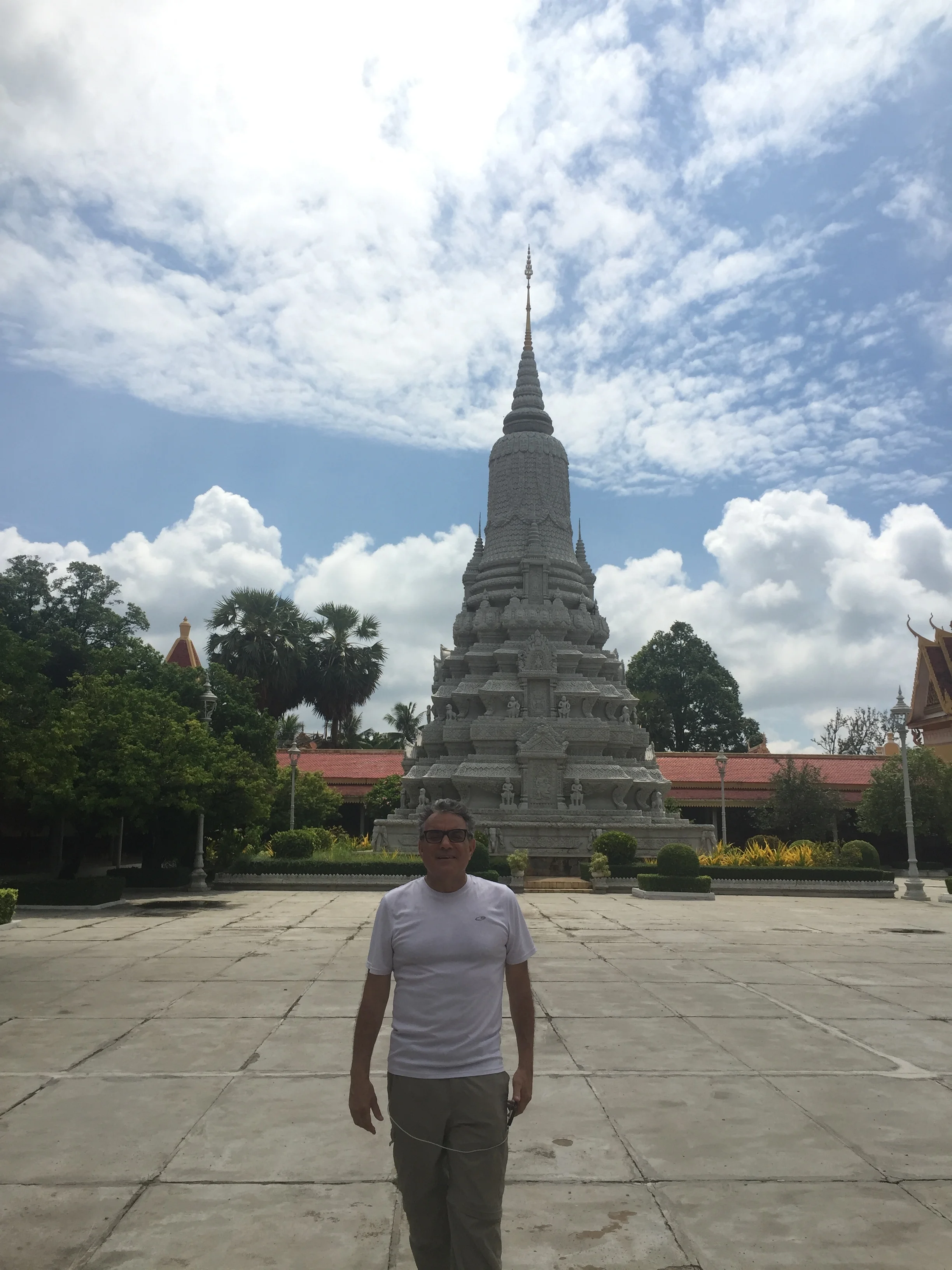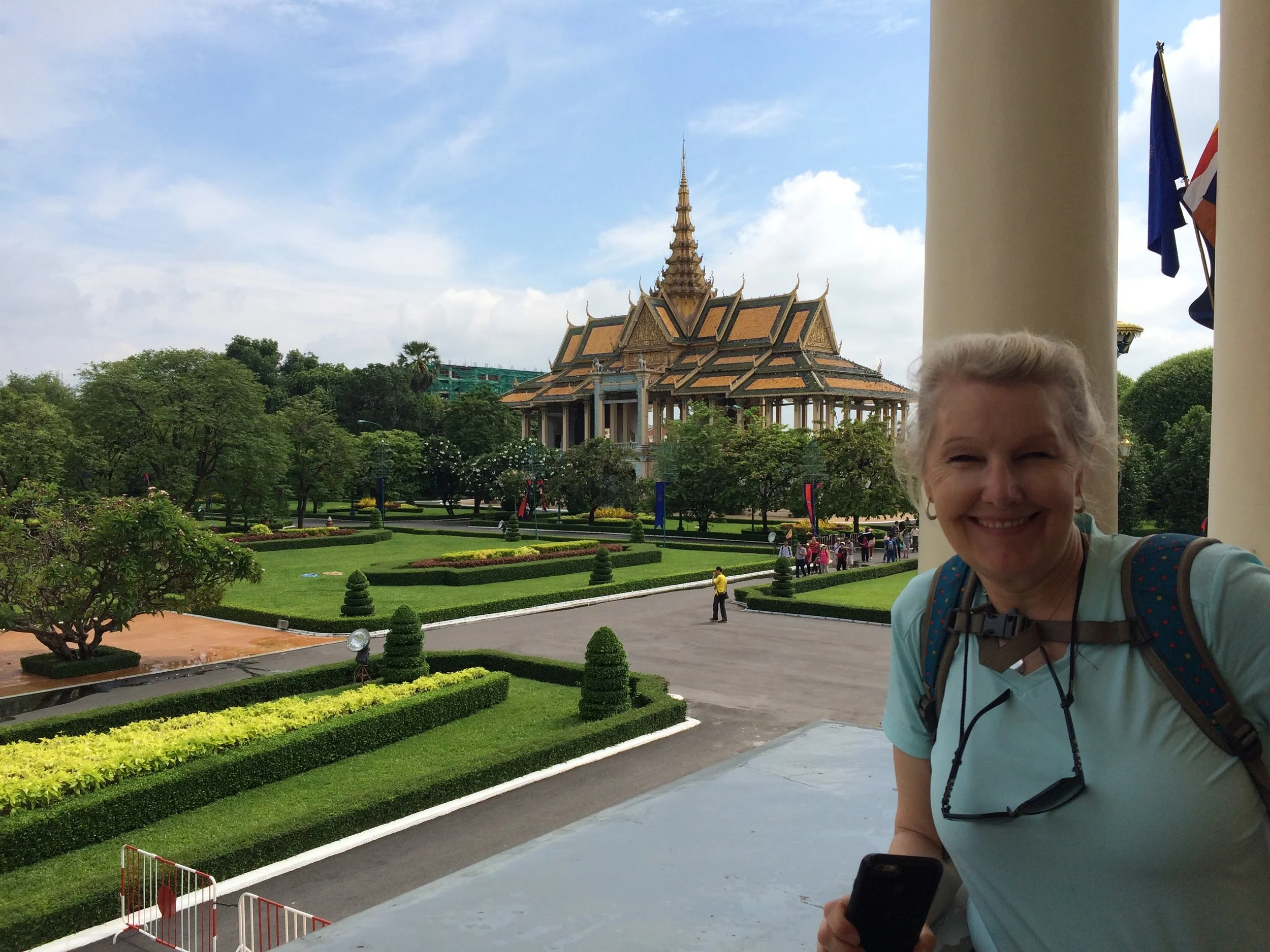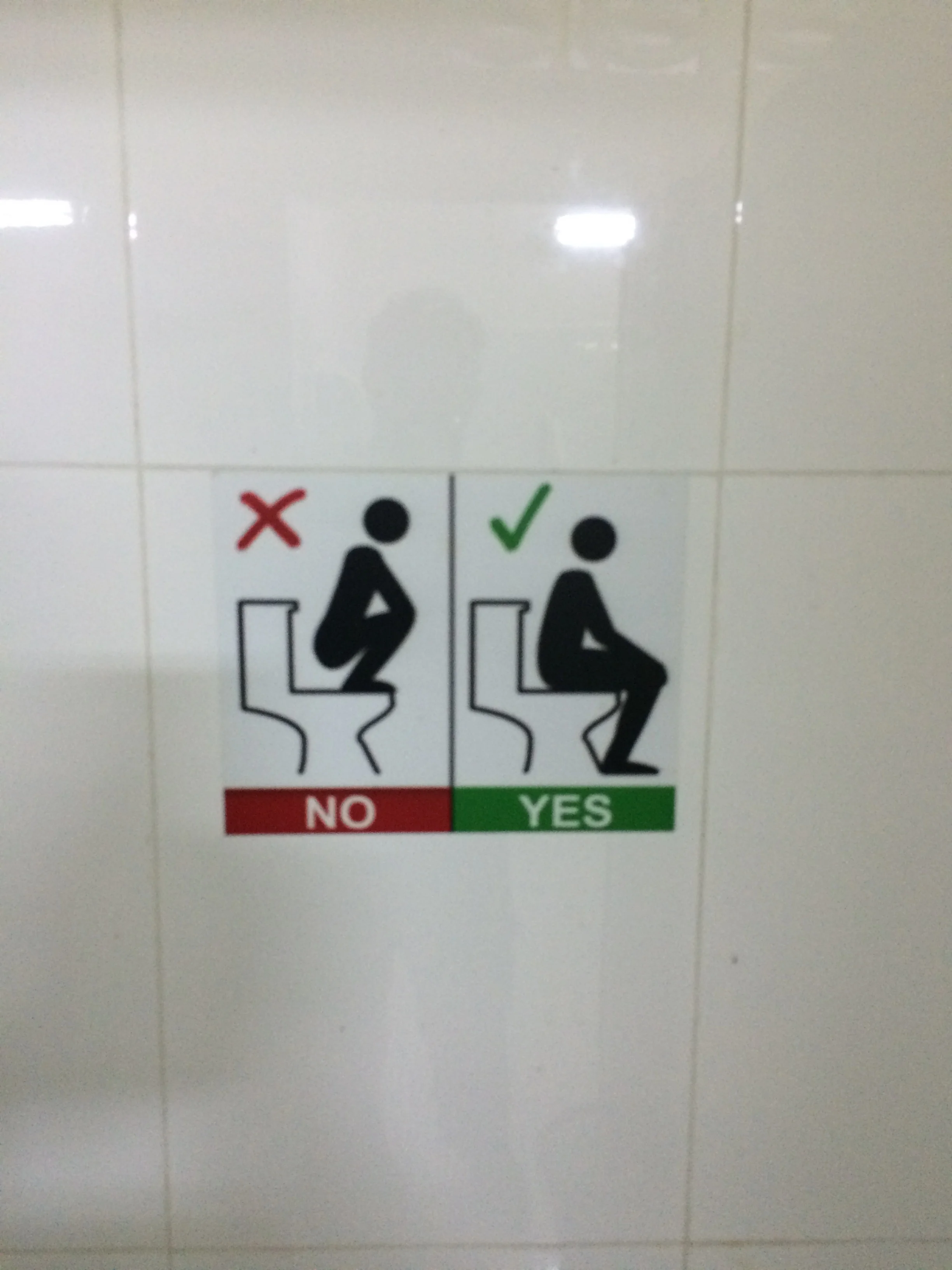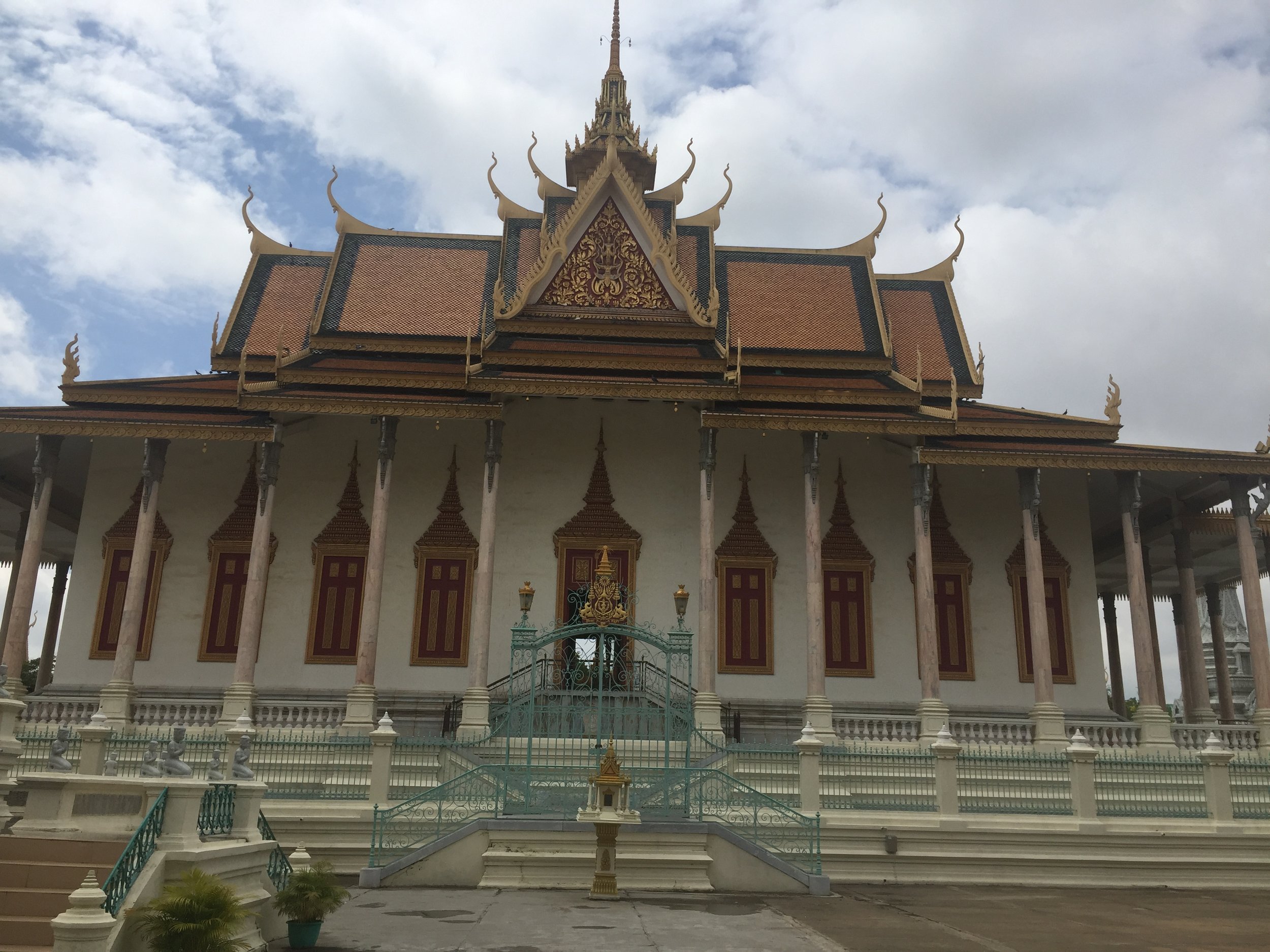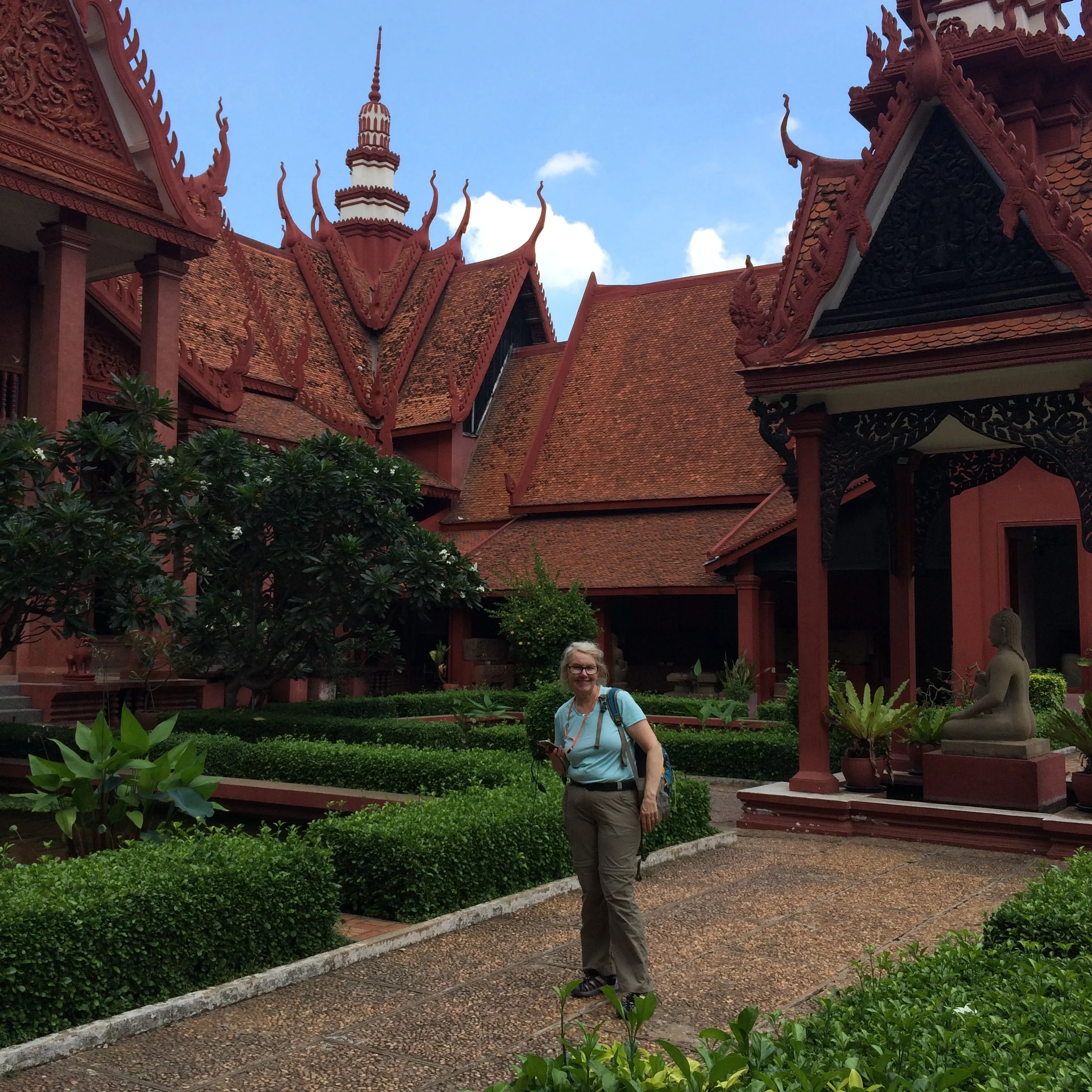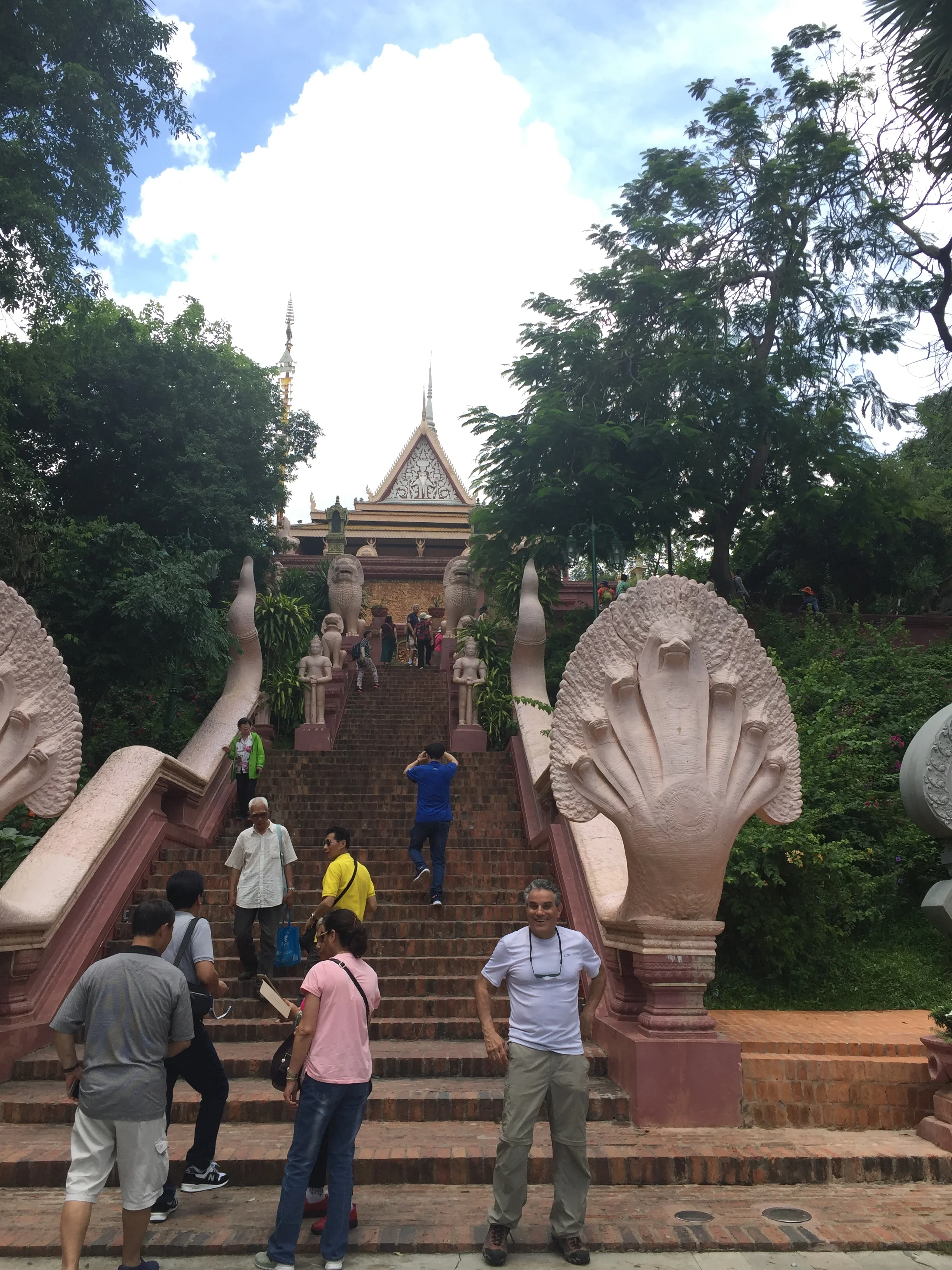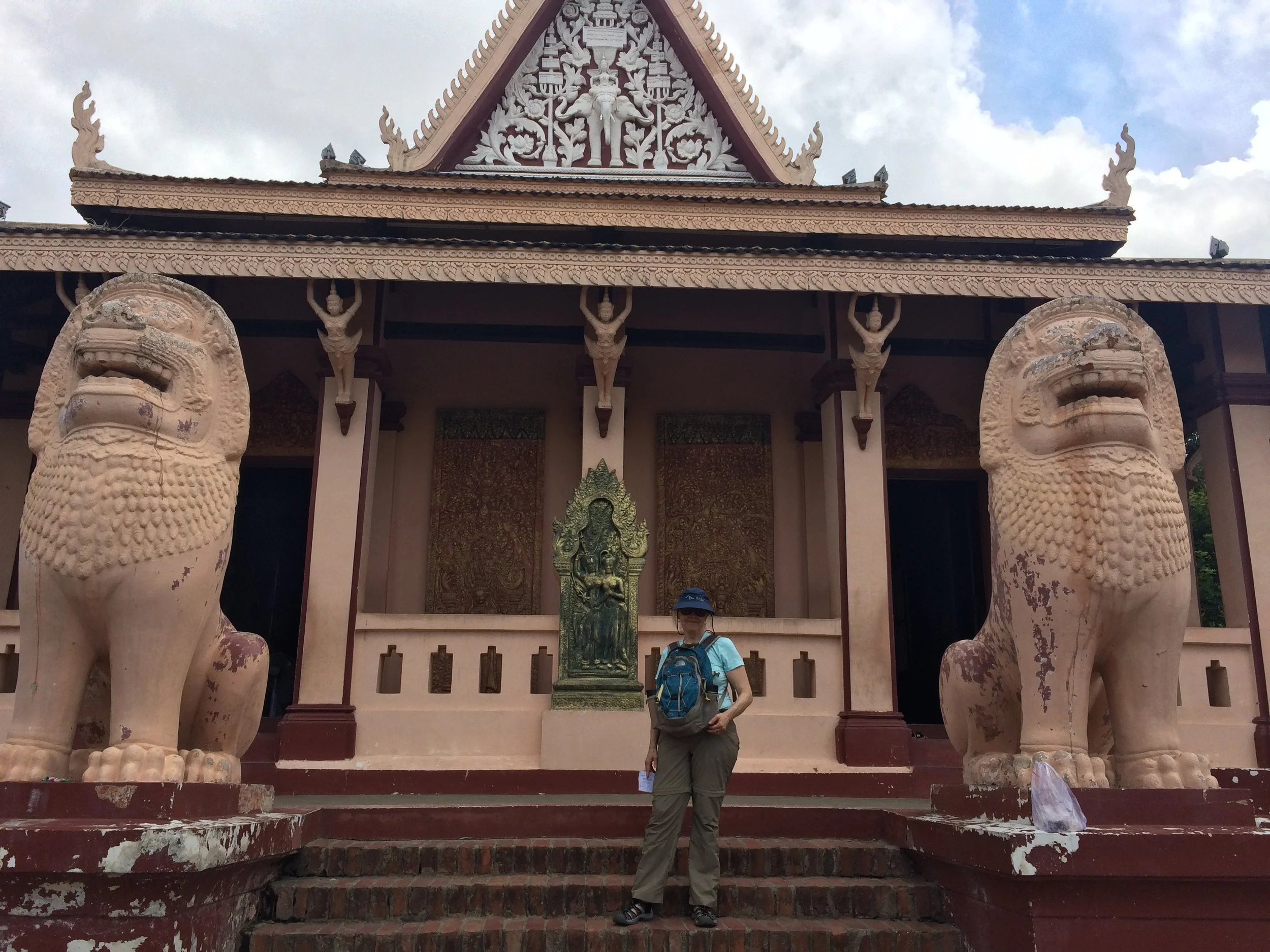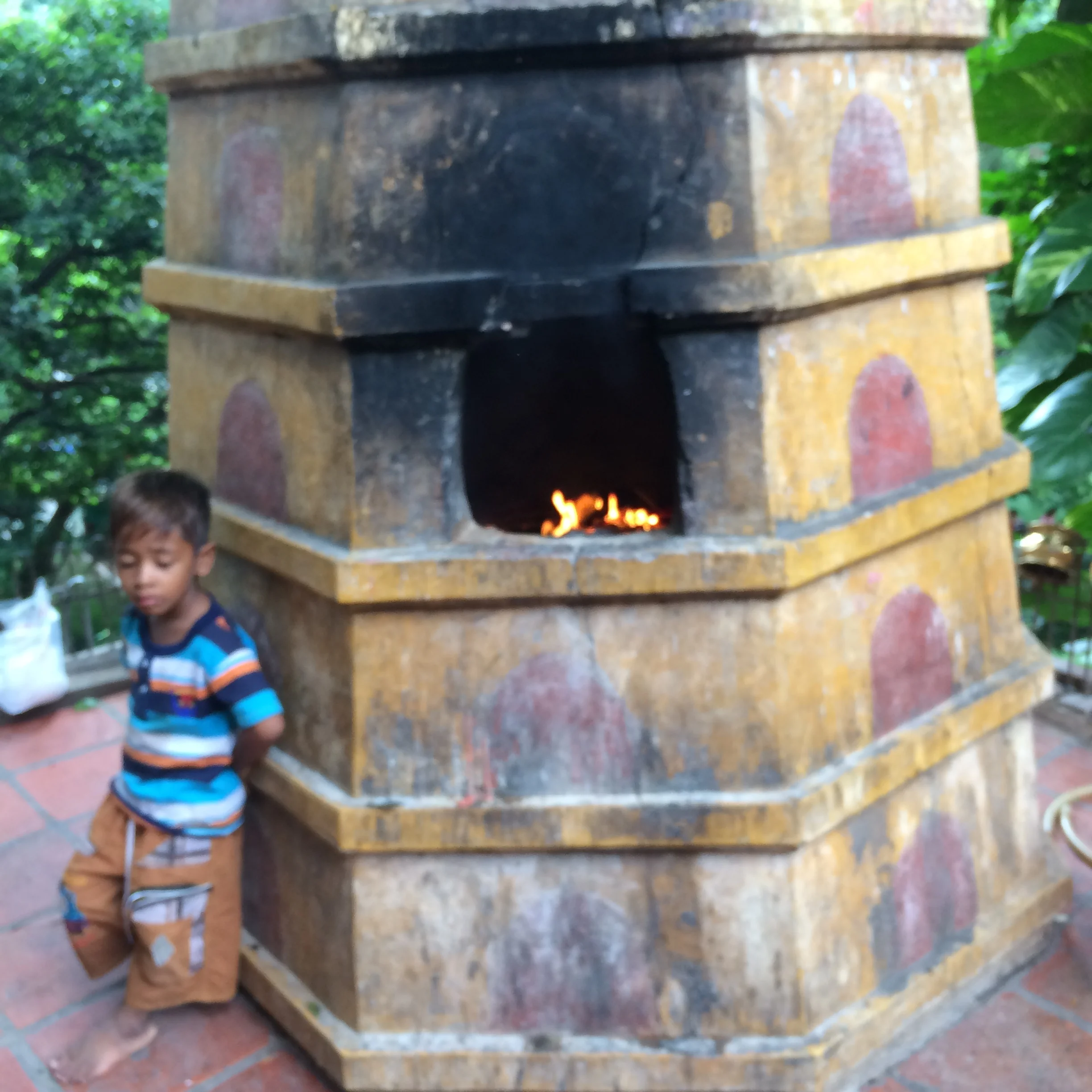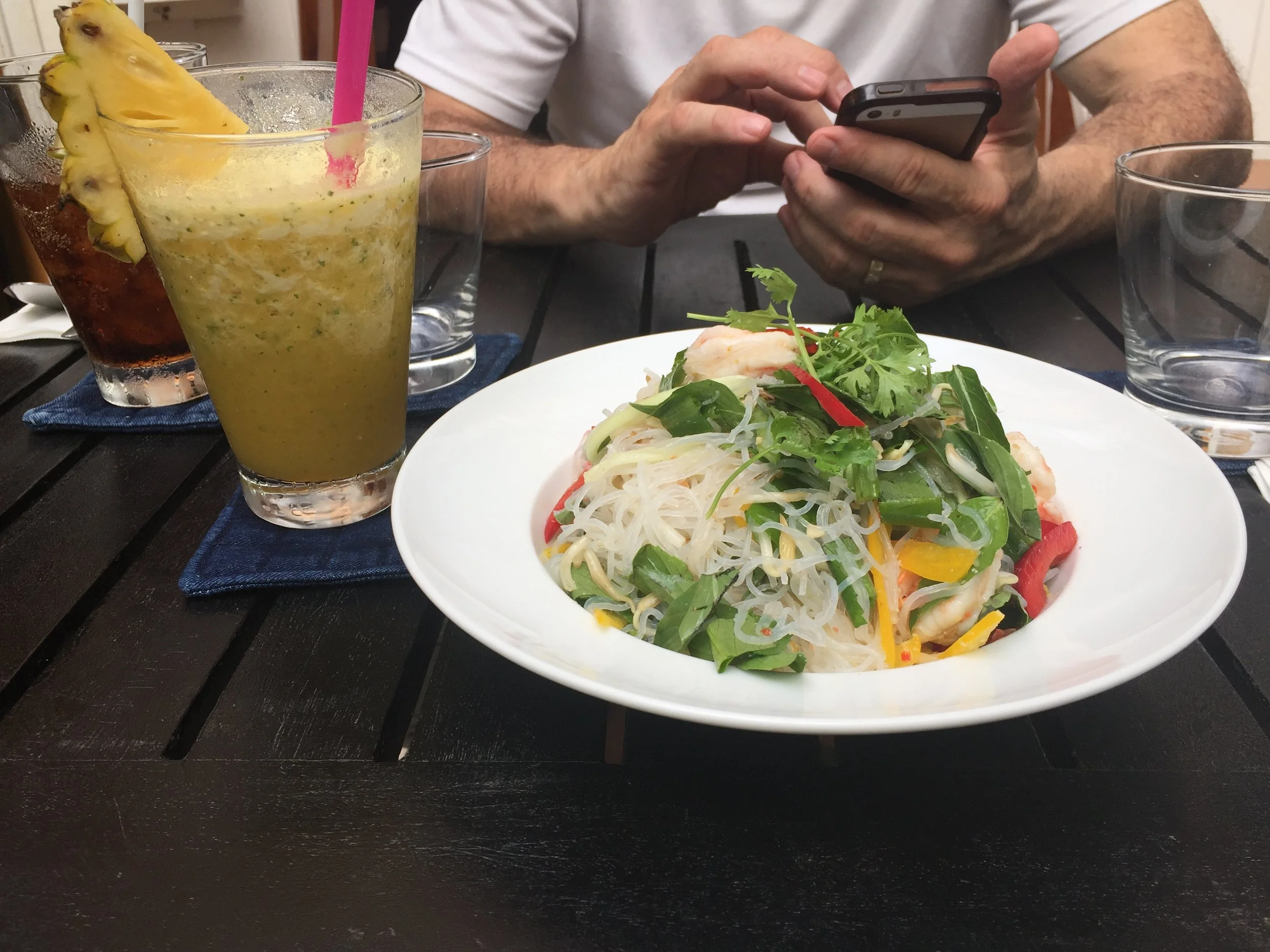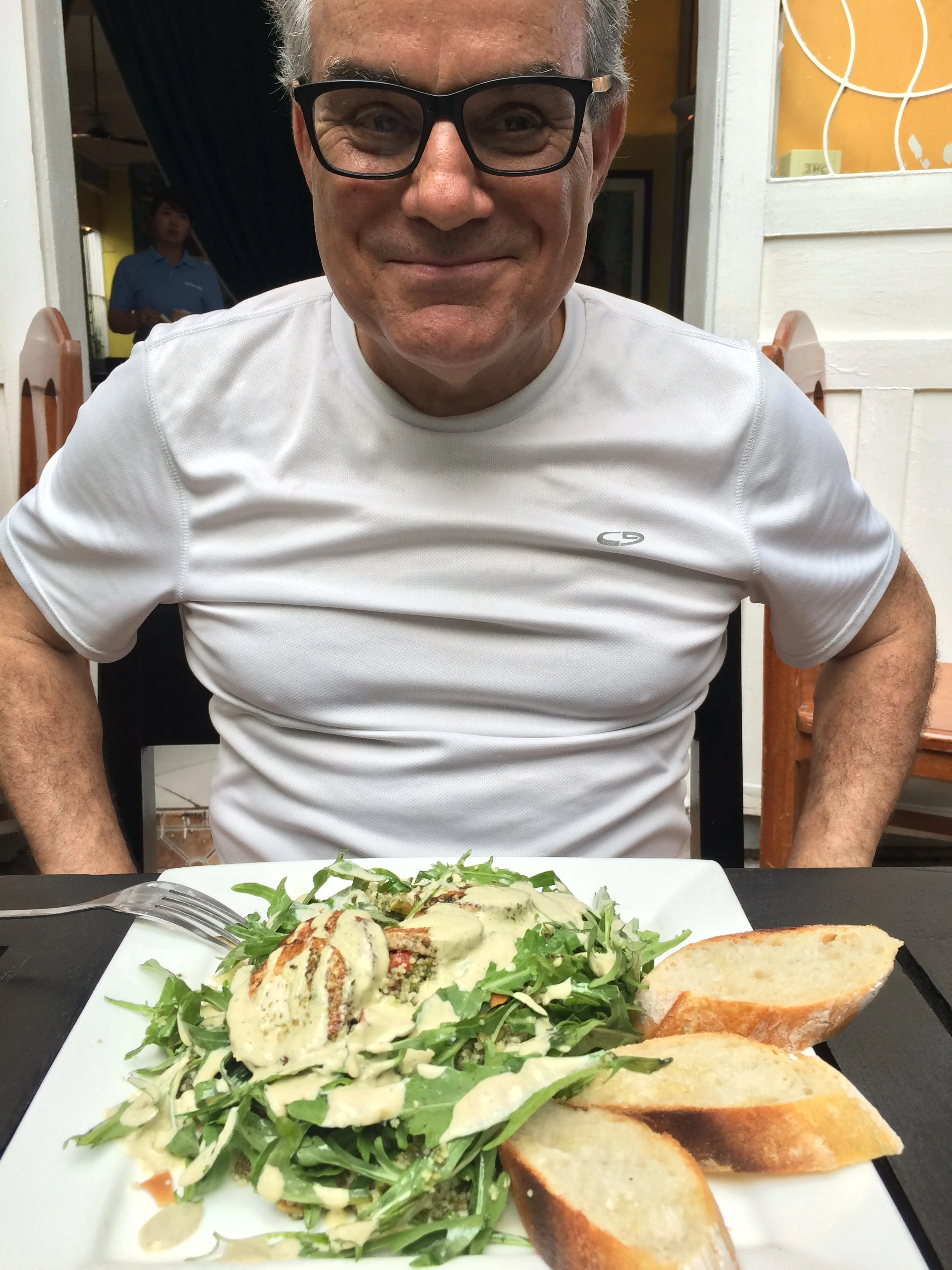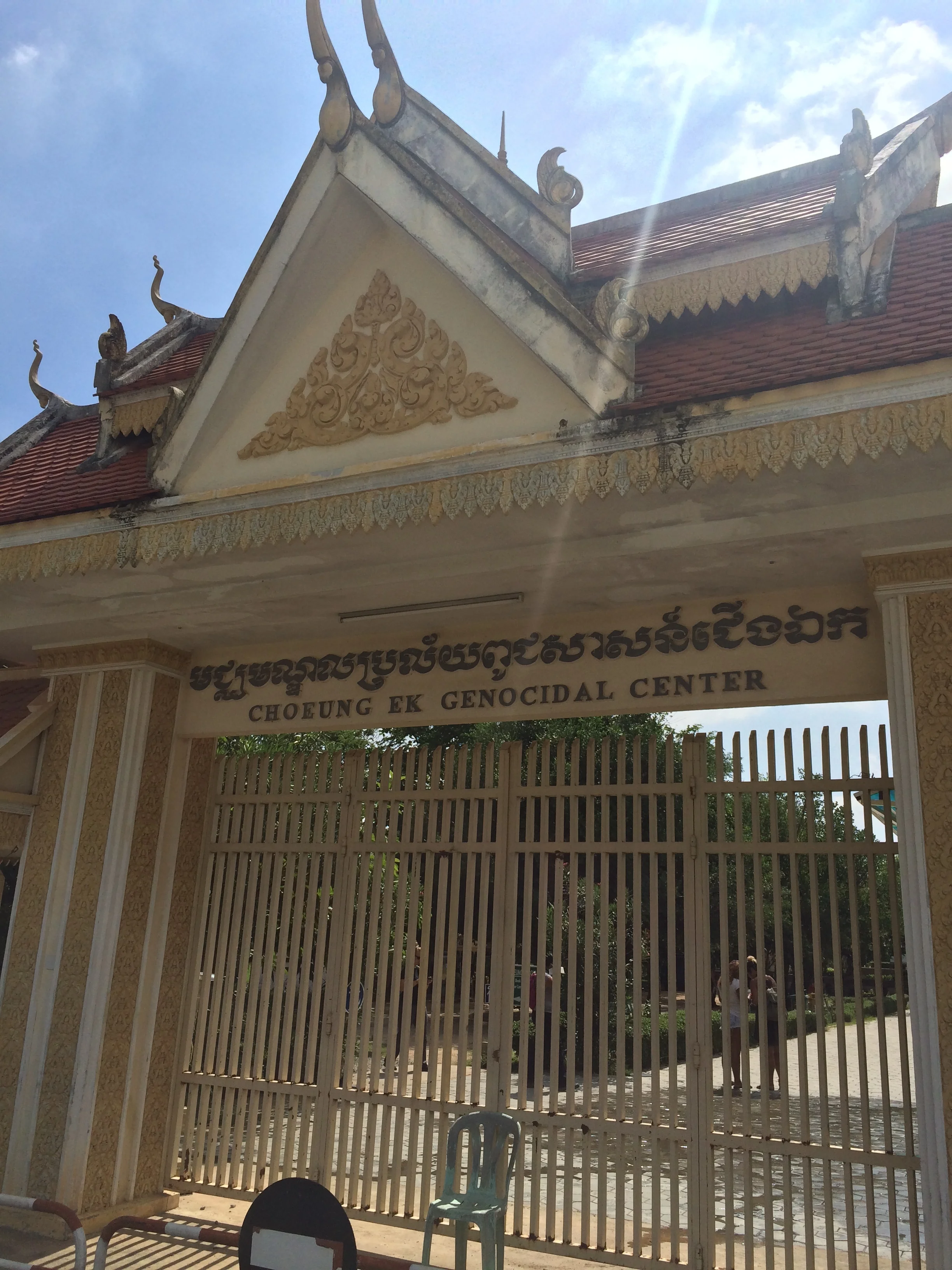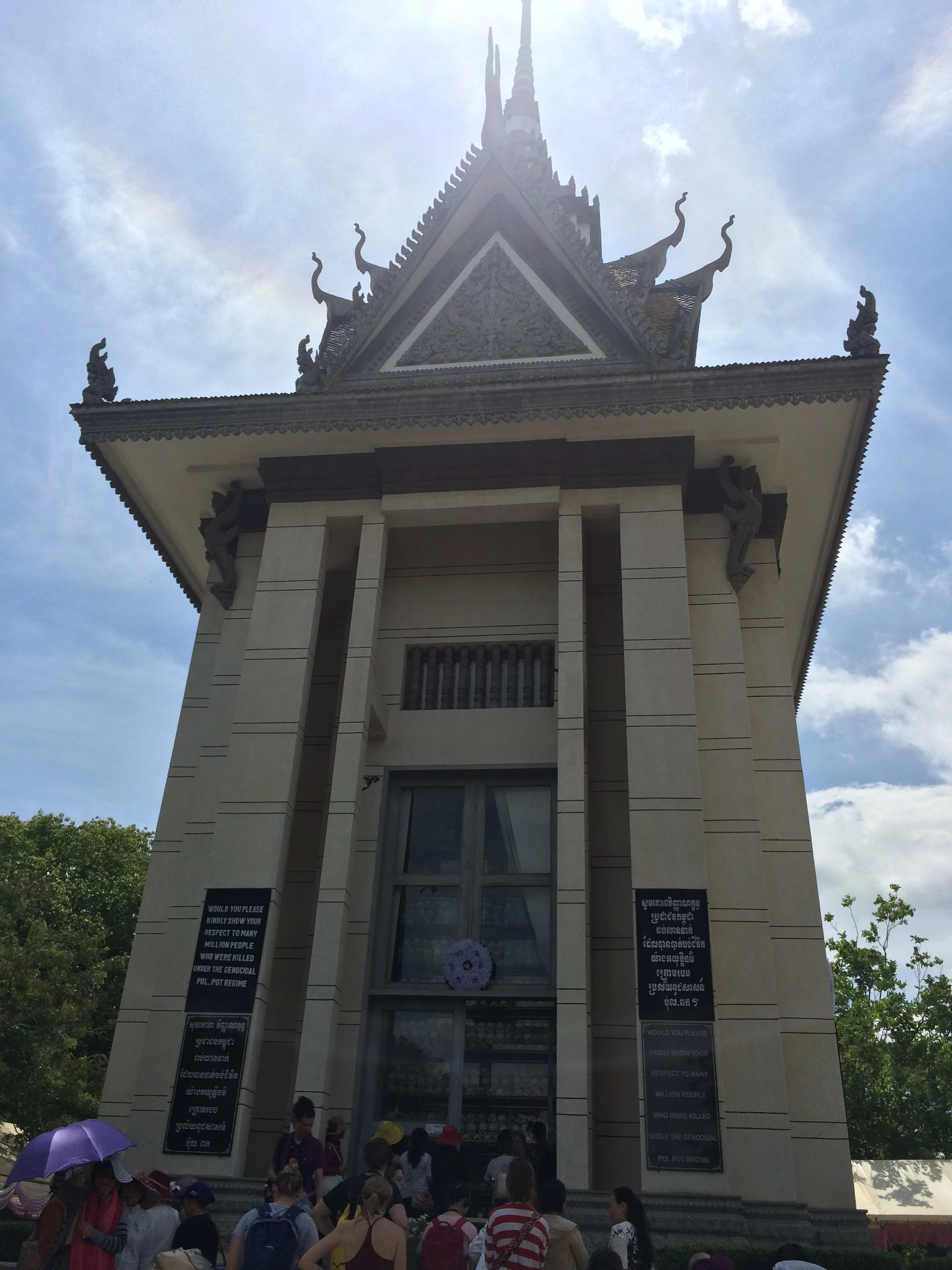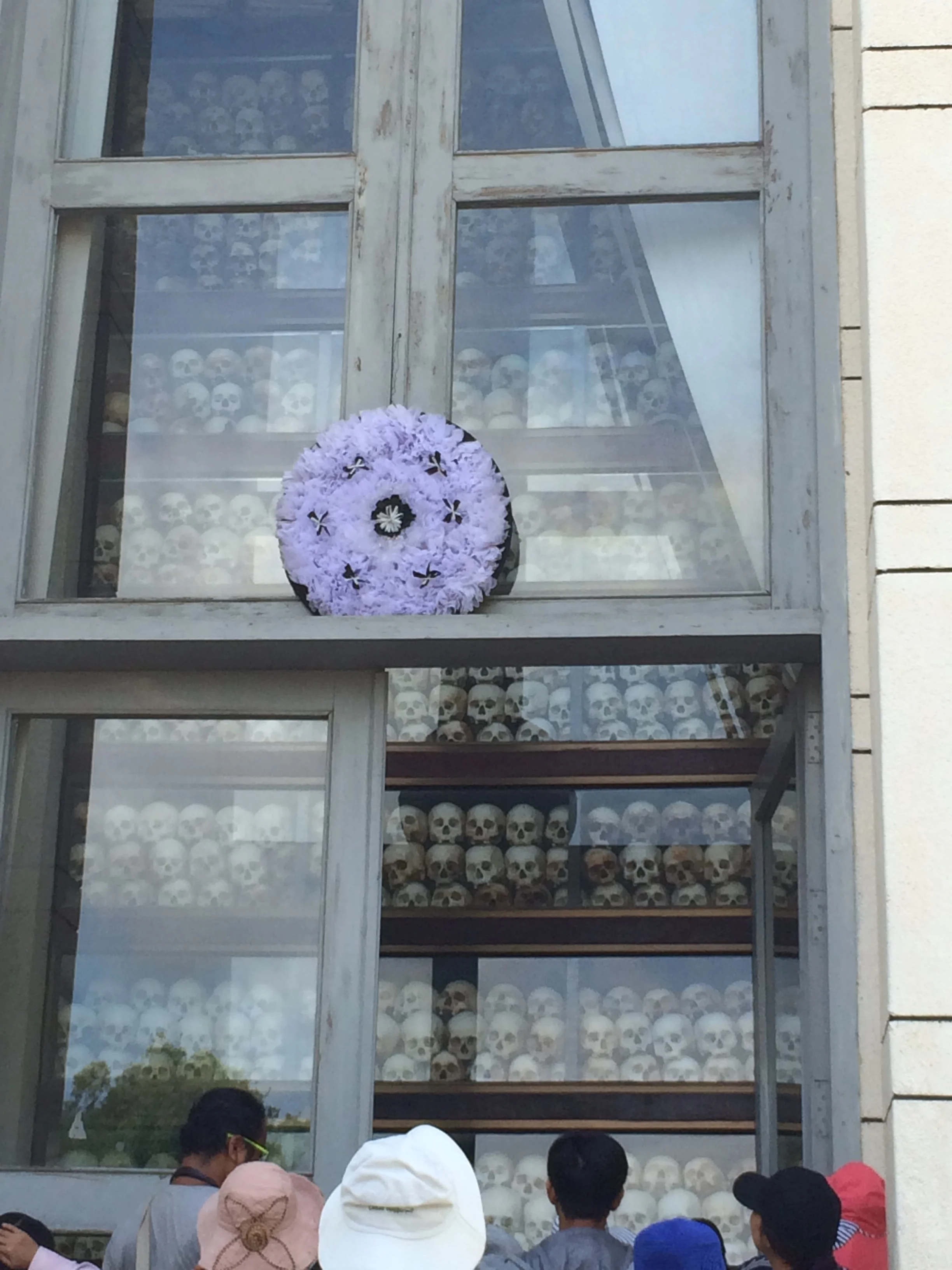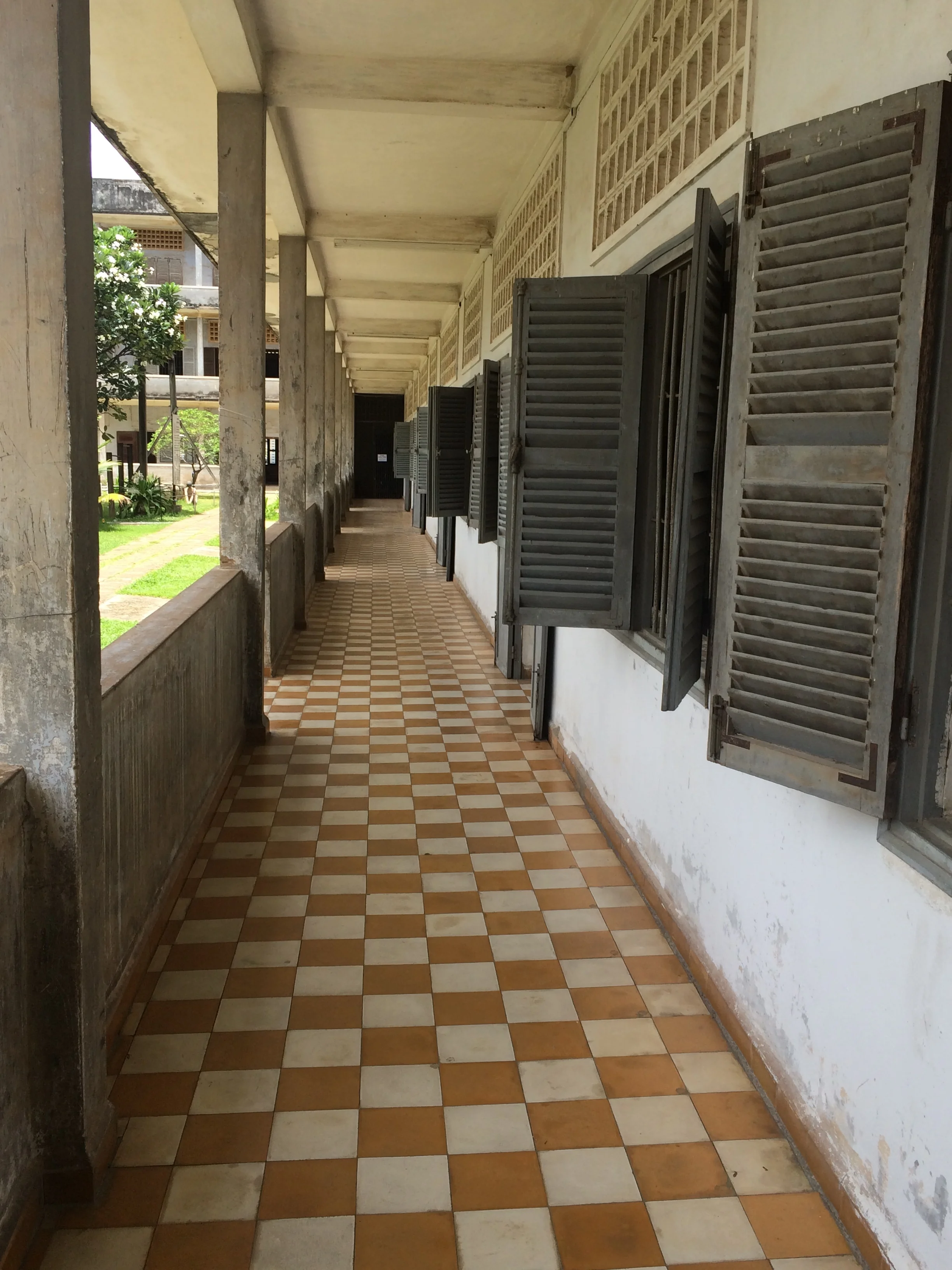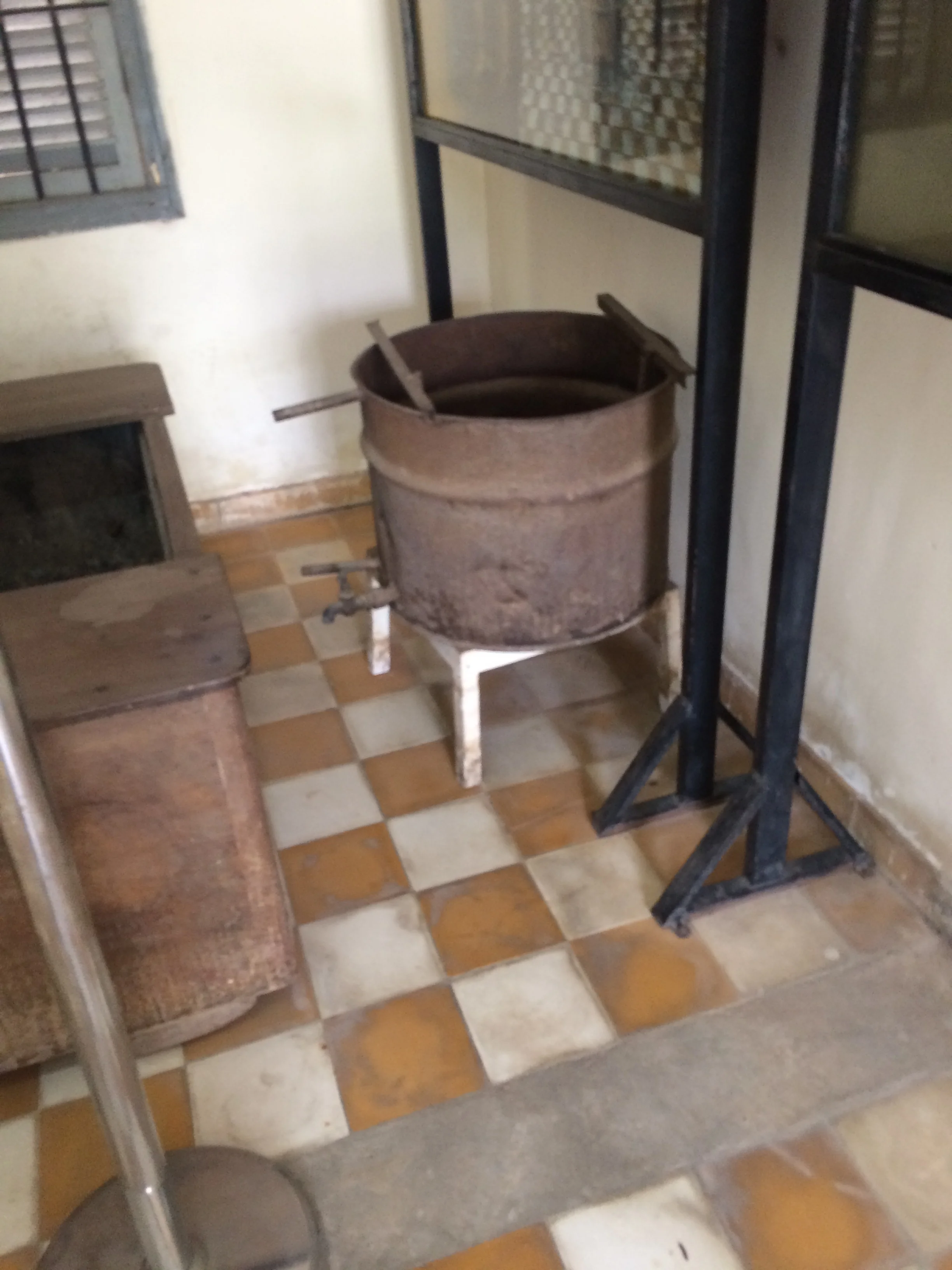Phnom Penh
Fancy border crossing was easy
We traveled from Vietnam to Phnom Penh on a new bus company, “Giant Ibis”; nice seats, AC, some WiFi, box lunch, but most importantly the Bus Steward processes the visa applications for the passengers and walks us through the border crossing from Vietnam into Cambodia. The travel takes 6-7 hours to get to Phenom Penh, the capital of Cambodia. We exchanged some money for Cambodian Reals; $1 equals 4000_R. Similar to Ecuador, Cambodia wants and prices all things in US dollars, but also takes its own Reals.
this is what $50 looks like in Cambodia
The countryside is lush green and flat. Occasionally, a spiked hill of craggy stone will shoot up. When we get to the out skirts of the city we notice the glimmering spires of Buddhist temples, the bright saffron robes of monks, the wide Mekong River, signs written in Khama letters that are not decipherable, whereas Vietnam uses the english alphabet. Use of english language is widespread, but not at the level of Vietnam. The population is very young and have features more like people from India; the monuments are well maintained, and the temples are much more elaborate and colorful then the ones in Vietnam. The religion is a more even mix and fusion of Hindu and Buddhism. Cambodia does not have the the “Happy” Buddha of Vietnam and China. You can see why some authors had called this City the “Pearl of Asia”, though its recent revolutions have tarnished the image. See our first sites from the bus of the cit
View from the tuk tuk
We come to a Central Park where the Ibis bus stops. A manager for the tuk tuk crew asks if we needed a ride to the Hotel. We did ; he assigned us to a driver who surprisingly spoke pretty good english. We don't know exactly what is happening in the USA, but when a lowly tuk-tuk driver not affiliated to any hotel but working at the bus station asks: “Why did Trump fire the FBI”—things have to be pretty crazy. The tuk-tuk is a covered passenger cart affixed to a small cc motorcycle. This is the major tourist mode of transportation around the city. There are relatively few cars, but a lot of scooters and small cc moto-bikes. The tuk-tuks seem to have the right of way, at least when we have ridden they pullout in front of everyone, cross lanes of ongoing traffic, and divert the path of those many “motos” running on either side; we have closed our eyes often.
Check in is a sit down affair with a wet towel and welcome drink in Asia
Our hotel is rather elegant with darkly varnished wood and a circular stairway next to the pool and bar. The room had a nice balcony; the bath was a pretty cool one square room of polished concrete walls and sink with the shower head in the middle—you showered without tub or curtain, but it was not ghetto. Our hosts are also young, maybe a little intimidated by us, but full of smiles and efficient enough. (We both thought this place needs some Vietnamese Girl Hostesses to really crank up the hospitality).
That evening we sought dinner at a highly rated Cambodian restaurant on this certain street, but neither us or the driver could find it in the dark, so we selected the well lite “Brooklyn Pizzeria” run by two Australian guys it turned out. The place was modern and packed with Cambodians; Nice Greek Salad and Meat Monster Pizza.
We hired the hotel tut-tut driver aka Mr. Vang for all day; $25; he delivered us to the various sites, waited for us, and drove us to the next stop and home. Many times we had our eyes closed.
Frank and our tuk tuk and driver
We selected 4 sites to tour on day one. The sites where interesting, especially the Royal Palace and Silver Pagoda. Since 1866, the palace serves as the King’s residence, a venue for court ceremony and as the symbol of the Kingdom. The buildings are brilliant in the light and the grounds are manicured. Attached to the Palace compound is the Silver Pagoda, so named because the floors are lined with silver tiles riveted into place. Here, the King meets with monks, royal ceremonies are conducted and the bejeweled Buddhas and other historical objects are displayed. The Royal Library Building, and Stupa for various deceased royalty are on the grounds. From the main thoroughfare you can observe the beautiful “Moonlight Pavilion” that serves as venue for the Royal Dancers, and proudly displays the portrait of the King..
We also went to the National Historic Culture Museum. This is the safe haven for Khmer Art, mostly statues and artifacts from the Pre-Angkorian and Angkorian era. The Angkoians were the tribes and culture that controlled Cambodia from AD 802 through 1432. They decide to move the capital to Angkor and their devotion to the Hindu deity Vishnu caused the Angkor Wat complex to be built. They also were involved in wars with “Vietnam” and “Champa”( Champa were an India-like population that lived in the most southern part of Vietnam). A later king who was a devote Buddhist, built “Angkor Thom”. This may be why Hindu and Buddhist belief has merged in Cambodia. Much of the art of the country was destroyed by the revolutionary “Year Zero” fanatics. Still, it was interesting for us to walk through, noticing the similarity to the Egyptian statuary we had seen before. See the photos of the lovely courtyard below
The hilltop pagoda of “Wat Phnom” was, by legend, the birth place of the City. Built by an elder lady who discovered 4 Buddha statues, she decided tohave a hill and small temple constructed to house them. From that start the city grew and was founded. The large Pagoda now on site is ornate and filled with religious artifacts; open to the public to look or pray.
We passed the soaring Independence Monument on our way to lunch. It was built to celebrate the 1953 Cambodian independence from France.
Frank at Independence Monument
We lunched at the “Government tech intern program eatery. The food had great taste; surprise we went vegetarian. Frank and grilled Tofu medallions over cuscus and rocket lettuce with white sauce; Janet had a salad of glass noodles. The food was outstanding.
We finished the day by going the so called Russian Market, named for foreigners who where predominantly Russians in the 1980’s. This is a collection of kitchen stuff, clothing, and art. We found some nice acrylics paintings for our collection and memories.
That evening we ate at a Korean restaurant near the hotel. We shared “Bish U”. This is the most scrumptious bowl of flavored ices with cut mango, shaved almonds, scoop of ice cream on top and secret cream sauce.
Panic in the middle of the night. Janet is sick as a dog. The next morning she wants to recover and sleep. She sends Frank alone to the prearranged tour stops. These are very important and tragic sites arising from revolution of the “Khmer Rouge”. The ancient Cambodian are known as the Khmer, the Rouge (red) is symbolic of Communism.
Mr. Vang transports me 50KM out of the city to a “Killing Field” memorial. There are about 300 execution areas in the country, this was the closest to Phenom Penh. Once a Chinese cemetery, it became the final resting place for “perceived” enemies of the state, mostly educated city dwellers.
The leader was called “Pol Pot” and he instituted a genocide policy called “Year Zero”, which sought to return Cambodia to an agrarian society. All families of intellectuals, or those meeting the low standard of persons with glasses or soft hands were executed. The slogan, “to kill the weeds you must pull out the roots” allowed indiscriminate killing of children and babies. Of course, Pol Pot treated the farmers badly; making them work in forced labor camps. The memorial site is a spewwith craters of dug out mass craves and has a tall Stupa that tearfully displays rows of Human skulls and bones. This killing field is marked with site references and some displays of particularly heinous activity, surprisingly now abutting a lovely natural pond. The key to this place was the stellar audio tour.
In order to continue this insight into the Khmer Rouge, the next stop was back in the city at “District 21 High School”, now known as “The Genocide Museum.” S-21 was converted into a prisonand interrogation facility run by Pol Pot’s henchman “Duch” Eva, and processed 17,000 people. This is a gloomy place which used torture to extract the desired confessions from men and women. Virtually all prisoners were executed and buried at the “Choeung Ek” location discussed above. Torture equipment and metal beds are displayed. Photos and records were kept of the prisoners. The processing was similar to the Nazi methods. Again the audio tour is outstanding.
When I returned to the hotel Janet was still bed ridden. We decided to get medical help and went to “SOS International Doctors”. Janet was familiar with the group. Our Doc was from Holland. After 2 hours of IV fluids, an injection and 3 prescription drugs, Janet was released.
She slept deeply and though we missed our Traditional Dance Show, we did not miss the morning bus to Siem Reap, the site of “Angkor Wat”.
